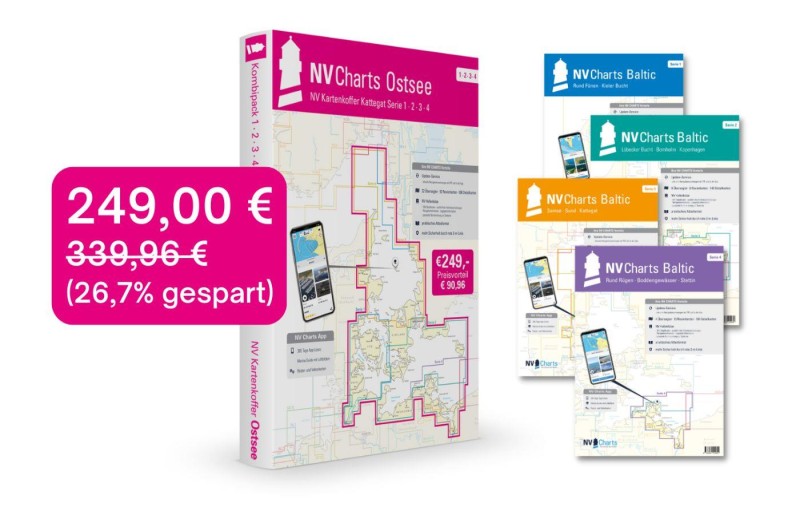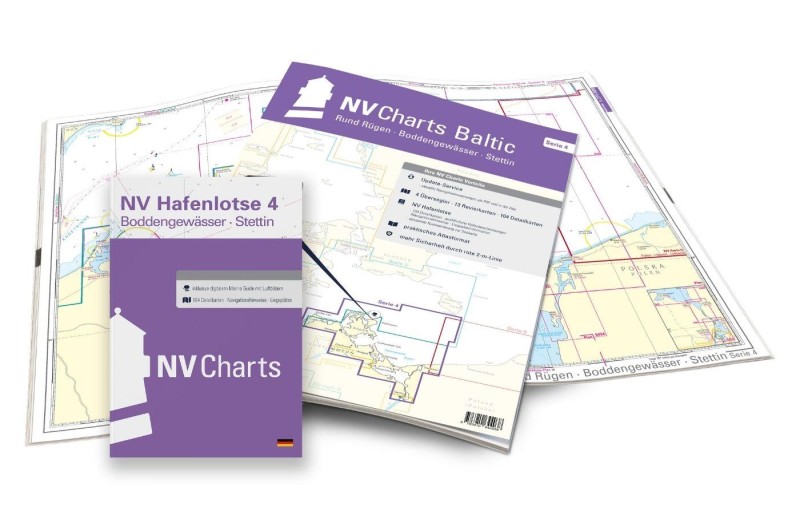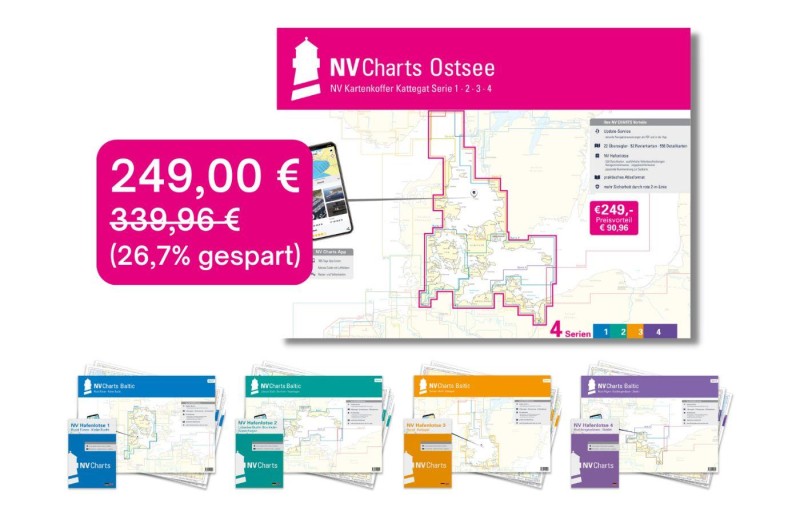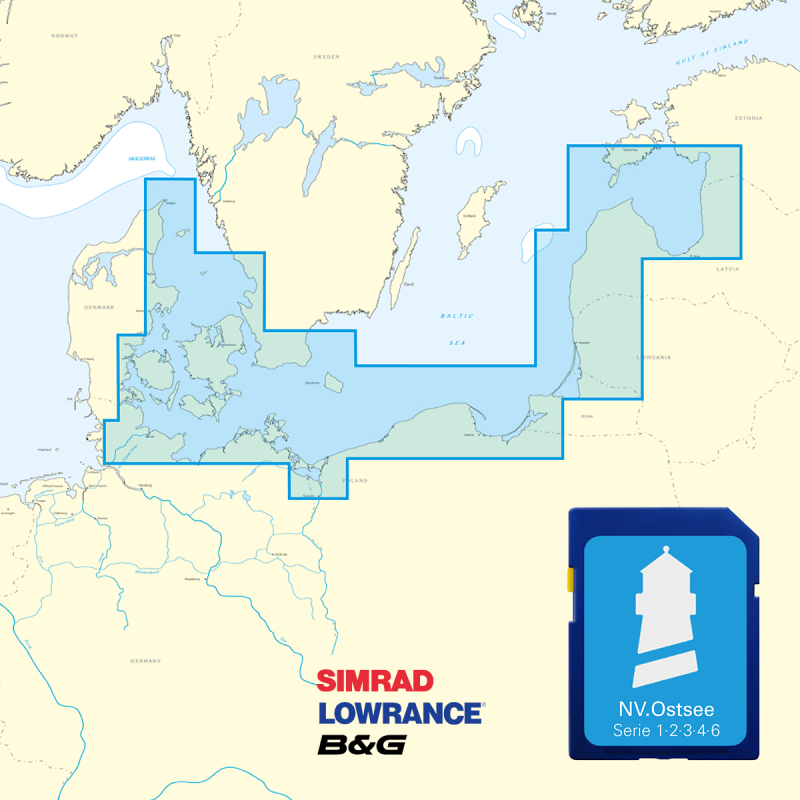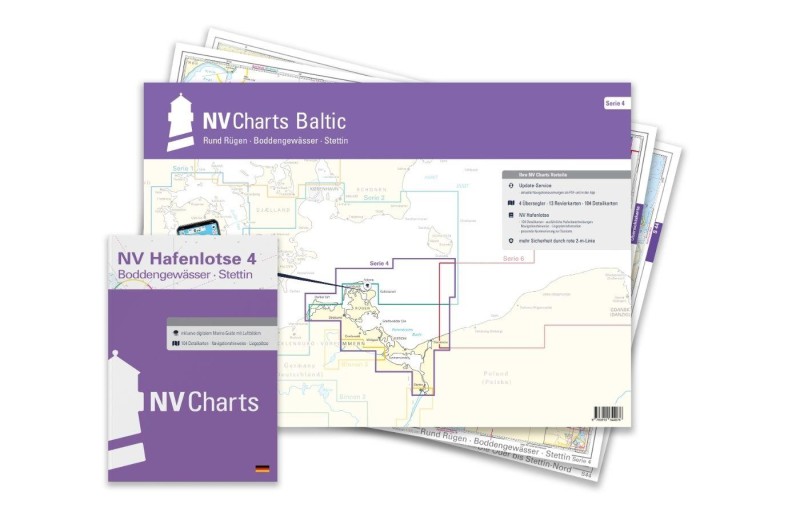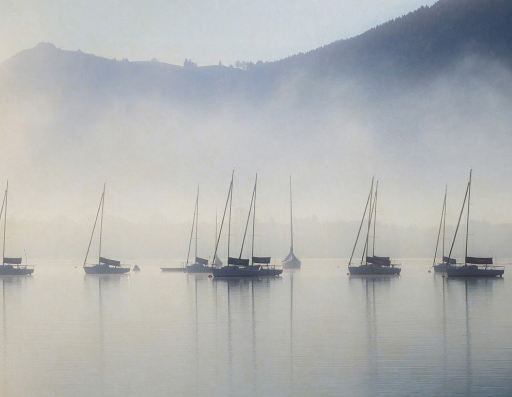Lauterbach
Marina near Putbus
Latitude
54° 20’ 24.3” NLongitude
13° 30’ 16.5” EDescription
Spacious former commercial port and modern marina on the north coast of the Greifswald Bodden
NV Cruising Guide
Navigation
The approach is possible day and night via the Lauterbach fairway, which is well buoyed and lighted in the western part. Coming from the southwest, keep clear of the rocky reef to the west of the island of Vilm.
From the east and southeast, avoid the shallow northeast foothills of the island of Vilm .
In addition, the rocky shallows to the west of the red spar buoy LB 2 must be avoided if there is sufficient draught.
Berths
There are several mooring options, all of which are managed by im-jaich:
- In the old commercial harbor on the two outer jetties with stern piles (2.5 m water depth).
- On the first two jetties of the marina with stern piles at 2.5 - 3.5 m water depth.
Surroundings
There is a good selection of restaurants and cafés along the commercial harbor. Modern and clean sanitary facilities are located in the marina (slightly away from the jetties in the commercial harbor). A repair workshop, travel lift and repair and engine service are available in the marina. The "Lauterbach Mole" stop on the "Rasender Roland" Rügen seaside resort train is located directly at the harbor.
A well-stocked supermarket and a small bakery are around 10 minutes' walk away in the village.
NV Land Guide
The port of Lauterbach may have a different character to Seedorf or Baabe, but serves as an ideal starting point for tours to Putbus and Bergen as well as nearby attractions. The marina impresses with its modern facilities and inviting atmosphere, complemented by a selection of high-quality restaurants and cafés. The harbor is also the perfect starting point for a trip to the island of Vilm.
Lauterbach has a train station north of the pier. However, because the small town and cultural center of Putbus, two kilometers to the northwest, can also be easily reached on foot, the train station is particularly interesting for excursions to the district town of Bergen, eight kilometers away. However, if you want to avoid the tourist hustle and bustle, be warned.
The administrative and commercial metropolis of Bergen has around 18,000 inhabitants and is also a transport hub in the geographical center of the island. The small-town character has been preserved in the town center. The 27-metre-high Ernst Moritz Arndt Tower, completed in 1877, is an outstanding and soaring landmark (for the person of Ernst Moritz Arndt: see Puddemin). From this massive building, erected in memory of the great patriot, you can overlook large parts of Rügen, including the Jasmund Bodden. The Slavic princes, who founded the settlement and fortress of Gora, which means mountain, a little further up on the ridge (90 m above sea level) must have appreciated the view. The town name Bergen was obviously derived from this.
It was Prince Jaromar I who always kept an eye on his subjects from his castle here. However, there is no longer any trace of his princely residence, although the castle square and breastwork suggest a once impressive defensive structure.
The Rügen chronicler Johann Jacob Grümbke was already fascinated by the view from the Rugard. In his 1805 publication "Streifzügen durch das Rügenland", he wrote: "Indeed, the old princes of Rügen could not have chosen a more appropriate place for their residence than the top of this mountain, which dominates the view over the entire island". Grümbke also reports that the foundation stones of the castle are now in the base of Spycker Castle (see Martinshafen). According to an old man, the Swedish commander Wrangel had them dug up and transported by water to Jasmund.
The market square is the center of Bergen. Here stands what is said to be the oldest half-timbered house on Rügen. We leave it to the reader to decipher the year of construction carved into the half-timbering. And another superlative: St. Mary's Church in Bergen is the oldest preserved building on Rügen. Prince Jaromar I had the brick building erected in 1180 and it became a nunnery just 13 years later. The Slavic prince will not have built the church of his own free will, but in 1168 Rügen was conquered by the Danes and Christianized under Waldemar I. The Danish influence on the architectural style is therefore unmistakable. The most interesting remnant from the Slavic period in this historical context is the gravestone embedded in the church wall. It probably depicts the Slavic god Swantewit.
The center of the small town of Putbus is located on a plateau two kilometers inland from the port of Lauterbach. Here, at the beginning of the 19th century, the Prince of Putbus developed the area around his castle into a luxury spa - with a view to the wealthy nobility and high-ranking personalities.
The castle of Malte von Putbus was to be renovated in the 1960s. An emissary is said to have been sent to the West to make the necessary purchases. The employee took the opportunity to flee and it is said that he also embezzled the money intended for the purchase. So, unbelievably but true, the castle was demolished without further ado. Despite this bitter architectural loss, a number of other historical buildings and facilities still remind us of the time when the first wealthy summer guests strolled through the spacious park: an orangery (1824), a neoclassical theater (1821), a late neoclassical basilica (1846), an old riding hall, a garden house converted into a park café (Rosencafé) and a number of residential buildings in the neoclassical style.
A special feature of the rose garden near the café is the ginkgo, also known as the primeval tree - a living fossil (as Darwin said).
The ginkgo plants represent the evolutionary link between ferns and conifers, a plant family that can be traced back millions of years. Of the numerous species, however, only the "Ginkgo biloba" is said to have survived today. The most striking thing about it is its fan-shaped, two-part lobed leaves. In autumn they turn yellow and the ripe, cherry-sized and fleshy fruits smell of butyric acid. The gingko died out in Europe during the Ice Age and was then imported from China as a fashionable plant in the 19th century. Douglas firs and sequoias also adorn the impressive park in the town of 5,000 inhabitants.
Also worth seeing is the almost ten-hectare Putbus game reserve with its old trees, fallow deer and red deer roaming in the wild and the "Jägerhütte" restaurant. The square in the north-east of the town with its neoclassical buildings was once known as the circus due to its circular shape. An obelisk in the middle of the traffic circle commemorates the founding of the princely residential area.
The feudal bathing establishment began in 1818 with the bathhouse on the Goor. It was built by Prince Wilhelm Malte I zu Putbus. The house with its elongated colonnade houses a café with a terrace. A Bronze Age burial mound is located near the bathhouse. More impressive, however, is the megalithic tomb 200 m north of Lauterbach (directly) on the railroad line to Putbus. It is considered to be one of the best preserved on Rügen.
"Rasender Roland" is the name given to the listed spa train that runs between Putbus and the Baltic seaside resort of Göhren. However, the old narrow-gauge railroad with two old steam locomotives as traction engines is by no means just a tourist attraction. It is used by many locals as a regular means of transportation (for a detailed description, see Baabe). If you feel like it, you can get off at the individual stations and visit one of the numerous megalithic tombs along the track, for example.
The Zirkow monument farm, 6 km north-east of Lauterbach, is an excursion destination worth seeing. Among other things, it houses a complete threshing train as it was used until 1930 - with straw press, threshing box and wagon.
A particularly interesting document here is an old lease agreement with 23 paragraphs between Malte Fürst zu Putbus and the tenant Johann Heinrich Subklev. The paragraphs contain almost exclusively prohibitions for the tenant and rights for the landlord. For example, it states: "Should the tenant be guilty of embezzlement in the manorial woodland, he must pay five times the value of the stolen wood - according to the assessment of the manorial forester - to the 'princely treasury'".
The striking Tuscan column southwest of Lauterbach was created by Wilhelm Stürmer in 1854. The Elector of Brandenburg looking out over the Baltic Sea is intended to commemorate the battle of the Brandenburgers and Danes against the Swedes in 1678.
The column to the north-east of Lauterbach (near Stresow), also created by Stürmer, depicts Friedrich Wilhelm I of Prussia, whose statue commemorates the victory of the Prussians and Danes over the Swedes in 1715, in which 2,000 soldiers lost their lives. Despite their defeat, the Swedes remained in possession of Rügen: this was decided in 1720 in the Frederiksborg peace treaty at the instigation of the French.
Marina Information
Contact
| Phone | +49 176 19 25 96 43 |
| Please enable Javascript to read | |
| Website | https://www.im-jaich.de/hafen/heimathafen-lauterbach/ |
Surroundings
Electricity
Water
Toilet
Shower
Washing machine
Restaurant
Imbiss
Crane
Atm
Internet
Grocery
Boatyard
Ramp
Travellift
Public Transport
Bikerental
Garbage
Comments
You can add comments with the NV Charts App (Windows - iOS - Android - Mac OSX).
You can download the current version at nvcharts.com/app.
Buy nv charts covering this place Clicking one of the products will open the nv charts shop.
Places nearby
Related Regions
This location is included in the following regions of the BoatView harbour guide:
